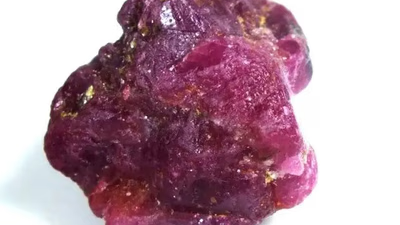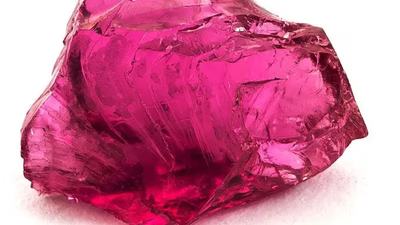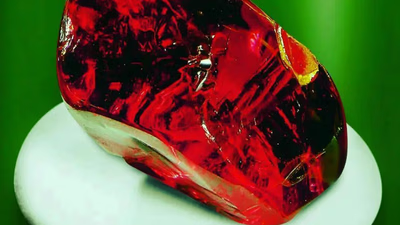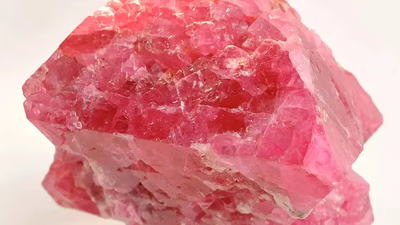
Spinel gemstones showcasing vibrant colors in the trade market.
The availability of spinel in the market directly affects its price. If the supply of spinel is limited or if there is a high demand for specific colors or qualities, prices tend to rise. Conversely, if the supply exceeds demand, prices may decrease. The quality of spinel, including factors such as color, clarity, size, and cut, significantly impacts its value. Fine-quality spinels with intense, vivid colors, high clarity, and desirable sizes command higher prices in the market. Rare colors, such as vibrant reds or vivid blues, can also influence the price.
Spinels from certain mining locations or with exceptional rarity can command higher prices. For example, spinels from renowned sources like Myanmar (Burma) or spinels with exceptional qualities, such as large sizes or unique color combinations, may have premium pricing. Overall market conditions, including economic factors, geopolitical situations, and global gemstone market trends, can impact spinel prices. Market stability, consumer confidence, and fluctuations in currency exchange rates can all influence the buying and selling prices of spinel.
What is clear is that the price of this beautiful jewelry is increasing in the world. The price of this stone in large sizes can be very high and below its large samples are very rare. It should be noted that spinel reserves are equally limited. For quality Burma and Tanzania samples, it can be as low as $ 200 to $ 500 per carat. For sizes up to 2 carats and pure red, the price is usually $ 600 to $ 1,200.
Similarly, by increasing the size, for example, 2 to 5 carats, 3 to 5 thousand dollars per carat will increase. Specimens with specific and rare colors and large sizes are also priced at up to ten thousand dollars per carat. What is obvious is the quality that determines the price of the spinel.
Spinel has a glassy sheen in its raw state; but the better and more accurately it is cut, the better the polish, to the extent that the polish is also upgraded to semi-hard (semi-diamond-like), which is an important advantage for Spinel. Transparent, brightly colored spinels with strong cuts are usually used to make jewelry, and more opaque, faded or opaque specimens are used to make spheres, symbolic pendants, and more.
The treatment status of spinel can affect its price. Natural, untreated spinels are generally more valuable and sought after compared to those that have undergone treatments such as heat enhancement or fracture filling. Trends and fashion preferences can influence the demand for spinel and subsequently impact its price. If spinel becomes popular due to celebrity endorsements, fashion trends, or cultural influences, the demand may increase, leading to price appreciation. Conversely, if spinel falls out of favor or faces competition from other gemstones, prices may decline.
The relationship between spinel price and the spinel sales market is influenced by various factors, including supply and demand dynamics, gemstone quality, market trends, and consumer preferences. It's important to note that the spinel sales market can vary regionally and within different market segments, such as high-end jewelry, collector markets, or wholesale markets. Additionally, individual gemstone dealers and retailers may apply their own pricing strategies based on factors such as their reputation, overhead costs, and desired profit margins. To accurately assess spinel prices and market trends, it is advisable to consult industry publications, gemstone trade organizations, and reputable gemstone dealers who have up-to-date knowledge and experience in the spinel market.
-

Spinel and ruby share similar red hues but differ in several key characteristics. Rubies typically exhibit a deeper red color with blue undertones, while spinels can range from orangey-red to pinkish-red. The refractive index (RI) is a crucial factor in distinguishing these gemstones, with rubies having a higher RI. Under UV light, rubies show strong fluorescence, whereas spinels display minimal fluorescence. Accurate identification is essential for gem dealers to provide transparency and ensure fair pricing based on quality and rarity. Historically, the two stones were often confused until the late 18th century when they were classified separately. Chemically, rubies are aluminum oxide corundum, while spinels are magnesium aluminum oxide. Rubies are rarer and more valuable than spinels due to their historical significance and market demand.
The quality of rubies can significantly influence their price, making them one of the most sought-after gemstones. Spinel has gained popularity recently but still holds a lower market value compared to ruby. Both gemstones may contain inclusions; however, rubies often have needle-like inclusions known as rutile silk, while spinels may show octahedral crystal inclusions. In terms of hardness, rubies rank 9 on the Mohs scale compared to spinel"s ranking of 8. "
-

Identifying artificial spinel gemstones involves several methods that highlight their differences from natural counterparts. Visual examination is crucial; look for unusual colors or synthetic growth patterns using a jeweler"s loupe or microscope. The refractive index (RI) is another key indicator, with natural spinel typically ranging from 1. 712 to 1. 736, while synthetic varieties may have a slightly higher RI. Advanced testing techniques, such as spectroscopy and X-ray diffraction, can provide definitive identification of synthetic spinel. Fluorescence tests reveal that natural spinels show weak fluorescence under UV light, whereas synthetic versions often exhibit strong fluorescence in various colors. Additionally, examining the gemstone under a microscope can reveal unique patterns and inclusions indicative of artificial production methods.
Natural spinels react poorly to magnets due to their iron content, while synthetic samples do not react at all. Price can also be a telltale sign; synthetic spinels are generally cheaper than natural ones and often appear glassy in texture. To ensure authenticity, purchasing gemstones with valid gem certificates is recommended. "
-

Spinel prices are influenced by supply and demand dynamics, quality, and market conditions. Limited availability or high demand for specific colors can drive prices up, while excess supply may lead to price drops. The quality of spinel, including color, clarity, size, and cut, plays a crucial role in determining its value. Rare colors and exceptional qualities from renowned sources like Myanmar can command premium prices. Economic factors, geopolitical situations, and global trends also impact market stability and consumer confidence. For instance, fine-quality spinels can range from $200 to $500 per carat for smaller sizes, while larger specimens with rare colors may reach up to $10,000 per carat. The treatment status of spinel affects its desirability; untreated stones are generally more valuable than treated ones. Fashion trends and celebrity endorsements can further influence demand and pricing.
The spinel sales market varies regionally across different segments such as high-end jewelry or wholesale markets. To navigate this complex landscape effectively, consulting industry publications and reputable dealers is essential for accurate pricing assessments.
-

Spinel is a durable gemstone known for its vibrant colors, including red, pink, blue, and black. Often confused with rubies and sapphires, spinel has historical significance, with notable pieces like the "Black Prince"s Ruby" actually being spinels. Its affordability and luxurious appeal make it a popular choice in jewelry. Spinel"s hardness of 8 on the Mohs scale ensures it is suitable for everyday wear, while its excellent transparency enhances its brilliance. Various types of spinel exist, each with unique properties based on their geographic origin. For instance, cinnamon spinel is found in California and Sri Lanka, while green spinel can be confused with emeralds due to their similarities. The market offers a wide range of spinel gemstones that can be cut into various shapes for jewelry making. Spinel"s rich history and diverse color palette contribute to its growing popularity among jewelers and consumers alike. "
-

Spinel is believed to influence both the body and mind, primarily through metaphysical practices rather than scientific validation. Advocates claim that spinel can enhance physical vitality, support recovery, and boost energy levels. It is also thought to aid in emotional healing by helping individuals release past traumas and negative emotions. Specific benefits attributed to black spinel include promoting clarity of mind, reducing headaches, and enhancing sexual power. Additionally, it is said to improve heart health and prevent various diseases. On a mental level, spinel is associated with clarity, focus, and creativity, helping users overcome confusion and enhance problem-solving skills. Different colors of spinel are believed to have unique effects; for example, red spinel may increase passion while blue spinel promotes calmness. Furthermore, spinel is regarded as a protective stone that shields against negativity and fosters emotional balance.
While many people find personal value in these beliefs about spinel"s properties, it is crucial to remember that they should not replace professional medical advice or treatment. "
-

Myanmar, Sri Lanka, Thailand, and Tajikistan are key players in the global spinel market. The Mogok region in Myanmar is particularly famous for high-quality spinel, including the renowned "Mogok Ruby. " Sri Lanka"s Ratnapura district is another significant source, known for its diverse color range. Thailand"s Bo Rai and Chanthaburi regions contribute to the gemstone trade as well. Spinel mining has also gained traction in Vietnam since the 1990s, especially around Luc Yen. Tanzania is notable for its vibrant red-pink spinels found in Morogoro County and Tunduru region. The Badakhshan Spinel mine in Tajikistan holds historical significance and produces both red and pink spinels. The availability of spinel can fluctuate due to new discoveries or depletion of existing deposits, making it essential to consult current sources for accurate information on mining operations.
Countries like Afghanistan, Nepal, Australia, and Madagascar also have notable spinel deposits. Overall, the global landscape of spinel mining is dynamic and influenced by various regional factors.






